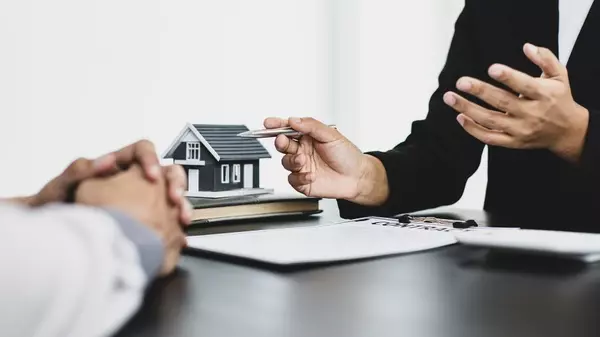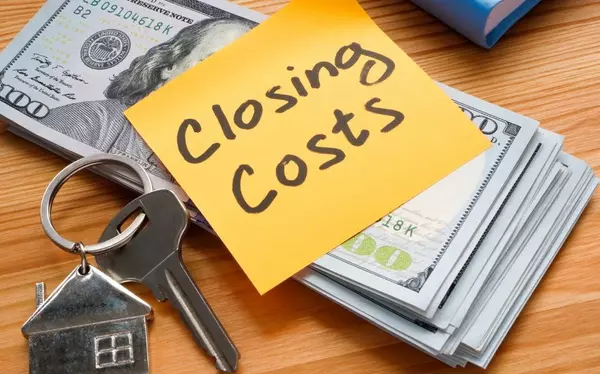What is Home Staging?

What is Home Staging?
Have you ever walked into a beautifully arranged home and felt an instant connection, imagining yourself living there? That’s the magic of home staging. But what exactly is home staging, and why is it so impactful?
The process of getting a house ready for sale by increasing its attractiveness to potential purchasers is known as home staging. This involves arranging furniture, decor, and other elements to highlight the home’s best features, creating an inviting atmosphere that helps buyers envision themselves in the space.
The significance of home staging in the real estate market cannot be overstated. Staged homes often sell faster and at higher prices than non-staged homes. In a competitive market, first impressions are crucial, and a well-staged home stands out, attracting more interest and better offers.
In this article, you will learn the fundamentals of home staging, its benefits, and why it’s an essential strategy for anyone looking to sell their home. Whether you’re a homeowner considering selling or a real estate professional, understanding home staging can give you a significant advantage in the marketplace.
Key Takeaways
- Definition and Purpose: Home staging involves preparing a property for sale by arranging furniture, decor, and accessories to enhance its visual appeal and help potential buyers envision themselves living there.
- Market Impact: Staged homes often sell faster and for higher prices than non-staged homes, making home staging a crucial strategy in a competitive real estate market.
- Differences from Interior Decorating: Unlike interior decorating, which reflects the homeowner's personal style, home staging neutralizes the space to appeal to a broader audience and highlight the home's best features.
- Key Elements: Effective home staging includes decluttering, depersonalizing, arranging furniture for better flow, utilizing good lighting, choosing neutral colors, and ensuring the home is clean and well-maintained.
- Professional Staging Benefits: Hiring a professional home stager can result in a significant return on investment, with staged homes typically increasing in sale price by 1-5% and reducing time on the market by up to 50%.
Understanding Home Staging
Home staging involves strategically arranging furniture, decor, and accessories in a home to enhance its visual appeal and attract potential buyers. The goal is to create an inviting environment that allows buyers to envision themselves living in the space. This process often includes decluttering, depersonalizing, and making minor repairs or updates to ensure the home looks its best.
While home staging and interior decorating both focus on aesthetics, they serve different purposes. Interior decorating is about personalizing a space to reflect the tastes and lifestyle of the homeowner. In contrast, home staging aims to neutralize the space, making it broadly appealing to a wide range of potential buyers. The emphasis in staging is on showcasing the home’s best features rather than expressing personal style.
The concept of home staging has evolved significantly since its inception in the 1970s. Barb Schwarz, often credited as the pioneer of home staging, began promoting the idea as a real estate agent in Seattle. She realized that staged homes sold faster and for higher prices, which led to the development of staging as a distinct profession. Over the years, the practice has gained widespread acceptance, with key milestones including the establishment of professional organizations like the International Association of Home Staging Professionals (IAHSP) and the proliferation of home staging courses and certifications, solidifying its importance in the real estate industry.
The Benefits of Home Staging
Home staging offers numerous advantages for sellers, significantly impacting the sale process and outcome. One of the primary benefits is increased property value. Statistics show that staged homes typically sell for 6-20% more than non-staged homes. For example, a study by the Real Estate Staging Association found that 85% of staged homes sold for 5-23% over their listing price.
Staged homes also tend to sell faster. Data reveals that staged homes spend 73% less time on the market compared to their non-staged counterparts. This speedier sale can be attributed to the immediate positive impression staged homes make on potential buyers, reducing the likelihood of price reductions due to extended market exposure.
In today's digital age, enhanced online appeal is crucial. Staged homes photograph better and stand out in online listings and virtual tours. High-quality photos of beautifully staged rooms attract more clicks and interest, leading to increased foot traffic at open houses and private showings.
Finally, home staging creates an emotional connection with buyers. By showcasing the potential of each space, staging helps buyers visualize themselves living in the home. This emotional engagement often leads to quicker decisions and stronger offers, as buyers can see the home as their future sanctuary.
Key Elements of Home Staging
Effective home staging involves several critical elements, each contributing to creating an inviting and appealing space. One of the first steps is decluttering and depersonalizing. Removing personal items and excessive clutter is crucial as it allows potential buyers to envision themselves in the home, rather than being distracted by the current owner's belongings. A tidy, clutter-free environment creates a sense of spaciousness and calm.
Furniture arrangement is another key aspect. Properly arranging furniture can maximize space and improve flow, making rooms appear larger and more functional. The goal is to highlight the home's best features and create natural pathways that guide buyers through the space effortlessly.
Lighting plays a significant role in setting the tone of a home. A room with well-lit areas might feel cozy and inviting. Utilizing a mix of natural light, overhead fixtures, and accent lighting helps to brighten up the home and create a cozy atmosphere.
Choosing neutral colors and tasteful decor is essential for broad appeal. Neutral tones on walls and furnishings provide a blank canvas that can attract a wider range of buyers. Tasteful decor adds style without overwhelming the senses.
Finally, completing essential repairs and thorough cleaning is vital. Fixing minor issues and ensuring the home is spotless can significantly enhance its appeal. A well-maintained and clean home sends a positive message to buyers, indicating that the property has been well cared for.
The Home Staging Process
Understanding the home staging process can help sellers feel more prepared and confident. It begins with an initial consultation. During this meeting, a professional home stager will tour the property, taking note of its strengths and areas for improvement. They will discuss the seller’s goals, budget, and timeline, providing a customized staging plan tailored to the home’s specific needs.
The next step is planning and preparation. This phase involves creating a detailed action plan, which may include decluttering, making minor repairs, and selecting furniture and decor. The stager will coordinate with the homeowner to ensure everything is ready for the implementation phase. This preparation is crucial for a smooth and efficient staging process.
Implementation is the heart of home staging. The stager arranges furniture, decor, and accessories to highlight the home’s best features and create an inviting atmosphere. This step often involves bringing in rented furniture and decorative items to enhance the property’s appeal. The goal is to transform the home into a welcoming, neutral space that attracts potential buyers.
Finally, the process concludes with adding final touches and preparing for photography. This includes ensuring that every room looks perfect and making small adjustments to enhance visual appeal. Professional photos are then taken to showcase the staged home in its best light, ready for online listings and marketing materials. This final step is crucial, as high-quality photos can significantly increase interest and attract more potential buyers.
DIY Home Staging Tips
Home staging doesn’t have to break the bank. Here are some budget-friendly tips to stage your home effectively on your own. Start by decluttering and depersonalizing. Remove personal items and excess clutter to create a clean, spacious environment. This simple step can make a big difference without costing a dime.
Next, prioritize key areas. Focus on staging the most important rooms, such as the living room, kitchen, and master bedroom. These spaces have the most impact on buyers' impressions. In the living room, arrange furniture to create a cozy, conversational area. In the kitchen, clear countertops and add a bowl of fresh fruit or a vase of flowers. For the master bedroom, use neutral bedding and minimize personal items.
Utilize what you have by repurposing existing furniture and decor. Rearrange furniture to improve flow and maximize space. Use neutral-colored slipcovers to give old sofas a fresh look. Accessorize with simple items like throw pillows, blankets, and wall art that you already own.
For quick fixes and tricks, focus on small details that can make a big impact. Clean windows to let in more light, replace outdated hardware on cabinets, and add fresh towels and a shower curtain in the bathroom. These simple, inexpensive changes can significantly enhance the overall appeal of your home for a last-minute showing.
Hiring a Professional Home Stager
When considering hiring a professional home stager, finding the right one is crucial. Start by researching and reading reviews to select a reputable home stager. Look for professionals who are accredited by organizations like the International Association of Home Staging Professionals (IAHSP) or have strong portfolios showcasing their work. Personal referrals and consultations can also provide insights into their approach and compatibility with your needs.
The cost of professional staging varies based on factors like the size of your home, the extent of staging required, and your location. On average, professional home staging can range from $500 to $5,000. Some stagers charge a flat fee, while others charge per room or offer package deals. It's essential to get detailed quotes and understand what services are included to ensure there are no surprises.
The return on investment (ROI) from professional home staging can be significant. Studies reveal that staged homes frequently sell more quickly and for more money. For example, the National Association of Realtors found that staged homes can increase a property's sale price by 1-5% and reduce time on the market by up to 50%. Investing in professional staging can lead to substantial financial gains, making it a worthwhile consideration for sellers aiming to maximize their home's value and appeal.
Common Myths About Home Staging
Myth: Staging is Too Expensive
Many believe that home staging is prohibitively expensive, but this is a misconception. In reality, staging can be a cost-effective investment. According to the National Association of Realtors, the average cost of staging is about 1% of the sale price, but it can increase the home's value by 5-15%. This means that the benefits of a higher sale price often outweigh the initial costs.
Myth: Staging is Unnecessary in a Seller's Market
Even in a seller's market, staging remains crucial. High demand doesn't negate the benefits of staging; it can enhance them. Staged homes stand out more, attracting multiple offers and potentially driving up the final sale price. Staging helps make a memorable first impression, which is vital regardless of market conditions.
Myth: Buyers Can Imagine the Potential Themselves
Relying on buyers to envision the potential of a space is risky. Most buyers struggle to see past clutter or empty rooms. Staging provides a clear vision of how spaces can be utilized, making it easier for buyers to form an emotional connection with the home.
Myth: Staging Only Works for High-End Homes
Home staging is beneficial for properties at all price points. Whether it's a modest starter home or a luxury estate, staging highlights the home's strengths and maximizes its appeal. Staged homes, regardless of their market value, tend to sell faster and for more money than their non-staged counterparts.
Conclusion
Home staging is a transformative process that can significantly enhance a property's appeal and value. By strategically arranging furniture, decor, and other elements, staging creates an inviting atmosphere that helps potential buyers visualize themselves living in the space. Whether you're a homeowner preparing to sell or a real estate professional, understanding and utilizing home staging can provide a substantial advantage in a competitive market, leading to faster sales and higher offers.
Categories
Recent Posts










